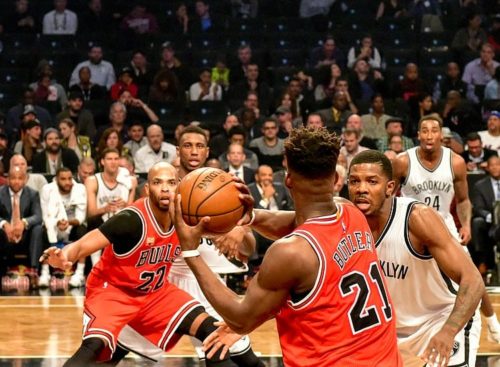Findings may offer clues to high rates of cardiac arrest among elite athletes
Professional basketball players have the highest rate of sports-related cardiac arrest in the United States. A recent study from Columbia University Medical Center in New York City looks at the possible reasons why.
Investigators examined the heart structure and function of more than 500 current National Basketball Association players and found significant differences between their hearts and those of other athletes and the general population.
The rate of sudden cardiac death, which occurs after the heart suddenly stops beating, is about 30 times higher among NBA players than other professional athletes. “We needed to know what a normal heart looks like in an elite basketball player,” said lead researcher David Engel, M.D., a cardiologist at Columbia. “There is very little information about the hearts of U.S. athletes.”
They don’t call NBA players “big men” for nothing. With an average height of 6 feet-7 inches and an average weight of 222 pounds, there’s no question these athletes are large.
For the study, published in the journal JAMA Cardiology, researchers looked at heart size and weight, as well as structure and function. They also evaluated the size of the aorta, the biggest artery in the body that carries oxygen-rich blood away from the heart.
Here’s what they found:
- Heart size increased along with the size of the athlete, which was expected.
- Basketball players have larger aortas than non-athletes.
- The left ventricle, which pumps blood from the heart to the rest of the body, was larger than that of most adults, though it was proportional to the players’ body size.
- More than 25 percent of the players had thickening of the wall of the left ventricle, called left ventricular hypertrophy, which can be a sign of decreased heart function. That thickening is also the most common cause of sudden cardiac death among basketball players. More black players had this condition than their white counterparts.
- Black players had heavier hearts than white players.
- Most players had normal left ventricular ejection fraction, a measure of how well the left ventricle pumps blood.
“For the first time, we have data on what a normal basketball player’s heart looks like, which can help us treat these athletes,” said Aaron Baggish, M.D., with the cardiovascular performance program at Massachusetts General Hospital in Boston and co-author of an editorial that accompanied the study.
The study allows physicians to look at a number of changes in cardiac structure and function that occur in athletes and represent physiologic changes in response to training and competition. Though determining which changes is responsible for an increased risk of sudden cardiac death in an athlete can be a challenge, the study’s findings provide an important blueprint for evaluating individual athletes’ hearts and designing screening programs.
With the baseline data from the study, researchers plan to follow these players into retirement. “We are tracking the players yearly to see if there are changes over time,” Dr. Engel said. “The goal of the program is to follow them into retirement and see how the heart changes after they stop playing and become older.”
The athletes in the study, average age 26, played in the 2013-2014 and 2014-2015 seasons. All had the required annual preseason stress echocardiograms.





